Score breakdown
Things we like
- Powerful hybrid drivetrain
- Great fun to drive
- Brilliant interior design
- Useful electric range
Not so much
- The price. My goodness the price.
- Tight rear seat
- Occasionally puzzling ergonomics
- No rear AEB
The new Peugeot 308 arrived on our shores in 2022. In cliched French fashion, it is stylish, doesn’t much care what you think of it, and was fashionably late.
In the well-established French tradition, it is commendably quirky, rides well and handles nicely.
Thing is, though, nobody buys hatchbacks anymore. But Peugeot’s local distributors have done quite nicely with this segment of car over the years. The Pininfarina-designed 306 with its whacky-but-effective passive rear-wheel steer was very successful. The 307 and 308 slowly floated out of the consciousness of buyers, despite the previous-generation 308 being quite good, especially in wagon and GTI form.

So Peugeot turned to SUVs, first with Mitsubishi’s help and then struck out on its own with the second-generation 3008, the 5008 and more recently the 2008.
Is there room in the market for a small hatchback? Sure there is – Toyota sells plenty of Corollas, Hyundai tons of i30s and Mazda lots of 3s.
The 308 is pitched and priced as a premium product, which is fair enough. But this new plug-in hybrid is a de facto replacement for the previous model’s GTI hot hatch as well as an appeal to green motorists alongside the all-electric E-2008.
However, that might prove a bridge too far and for just one important reason. See if you can spot it.
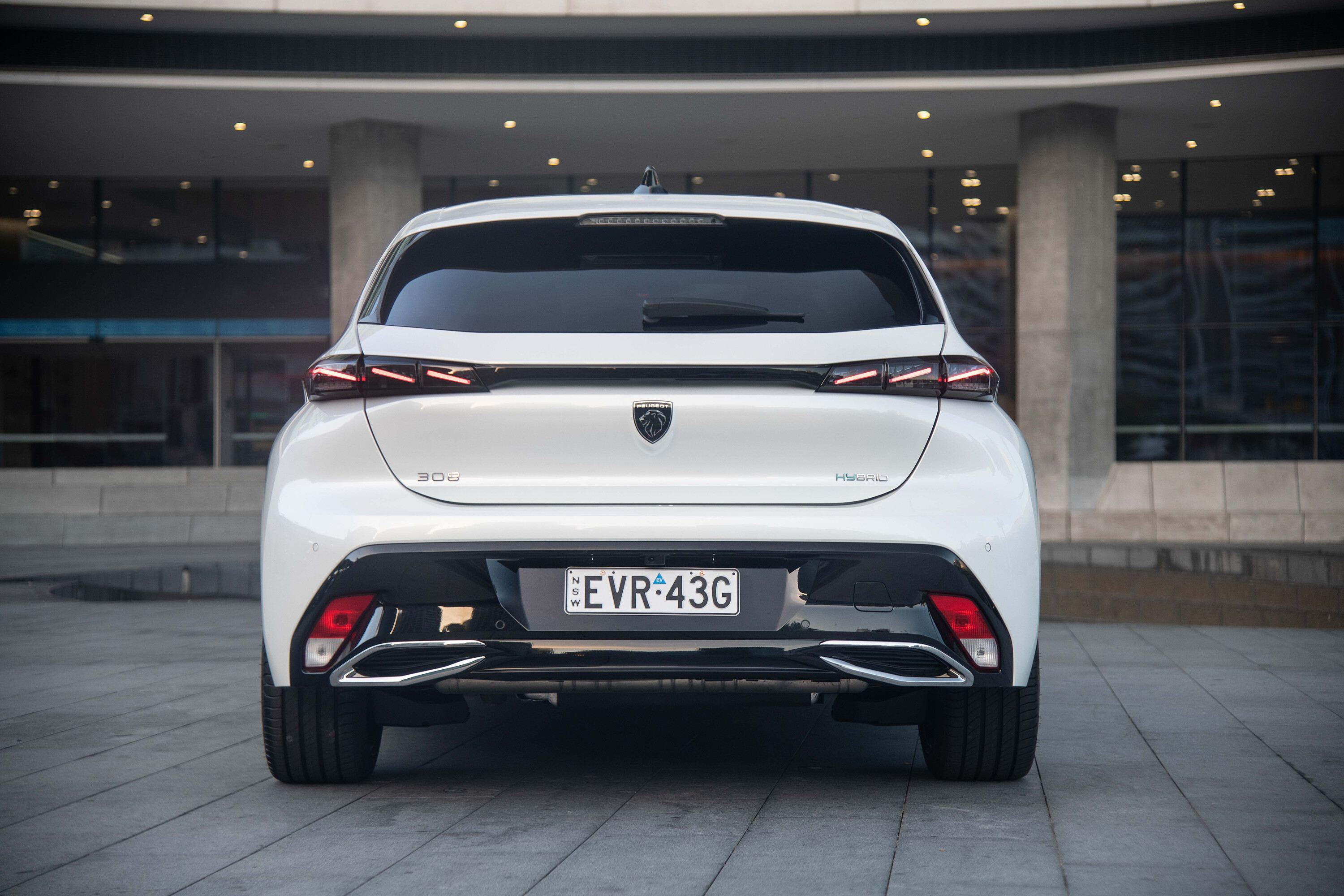
JUMP AHEAD
- How much is it, and what do you get?
- How do rivals compare on value?
- Interior comfort, space and storage
- Battery and charging
- What is it like to drive?
- How is it on fuel?
- How safe is it?
- Warranty and running costs
- VERDICT
- Specifications
How much is it, and what do you get?
The Peugeot 308 GT Sport PHEV is a small five-door hatchback priced at $64,990 plus on-road costs.
I mean nobody outside of BMW or Mercedes has the front to charge this kind of money for a hatchback and even when they do, you get a fair bit for your money. That’s not to say you don’t do well with the 308, because it’s generously if not lavishly specified:
| 2023 Peugeot 308 GT Sport PHEV features | |
|---|---|
| 10-speaker Focal audio | Interior ambient lighting |
| 18-inch alloy wheels | Keyless entry and start |
| 360-degree cameras | Massaging and heated front seats |
| Auto LED headlights | Nappa leather and Alcantara upholstery |
| Auto wipers | Reversing camera |
| DAB+ digital radio | Sunroof |
| Digital instrument panel | Tyre repair kit |
| Dual-zone climate control | Wireless Android Auto |
| Front and rear parking sensors | Wireless Apple CarPlay |
| Heated steering wheel | Wireless phone charger |
The 10-inch 3D digital dashboard is very cool and presents information on a configurable and/or need-to-know basis that is entirely likeable. It integrates with Apple CarPlay to project map-app directions from your phone and it’s a rare moment of genuine if mild innovation in dashboard presentation. The three-dimensional effects are really quite lovely, with a bit of a sci-fi flavour.
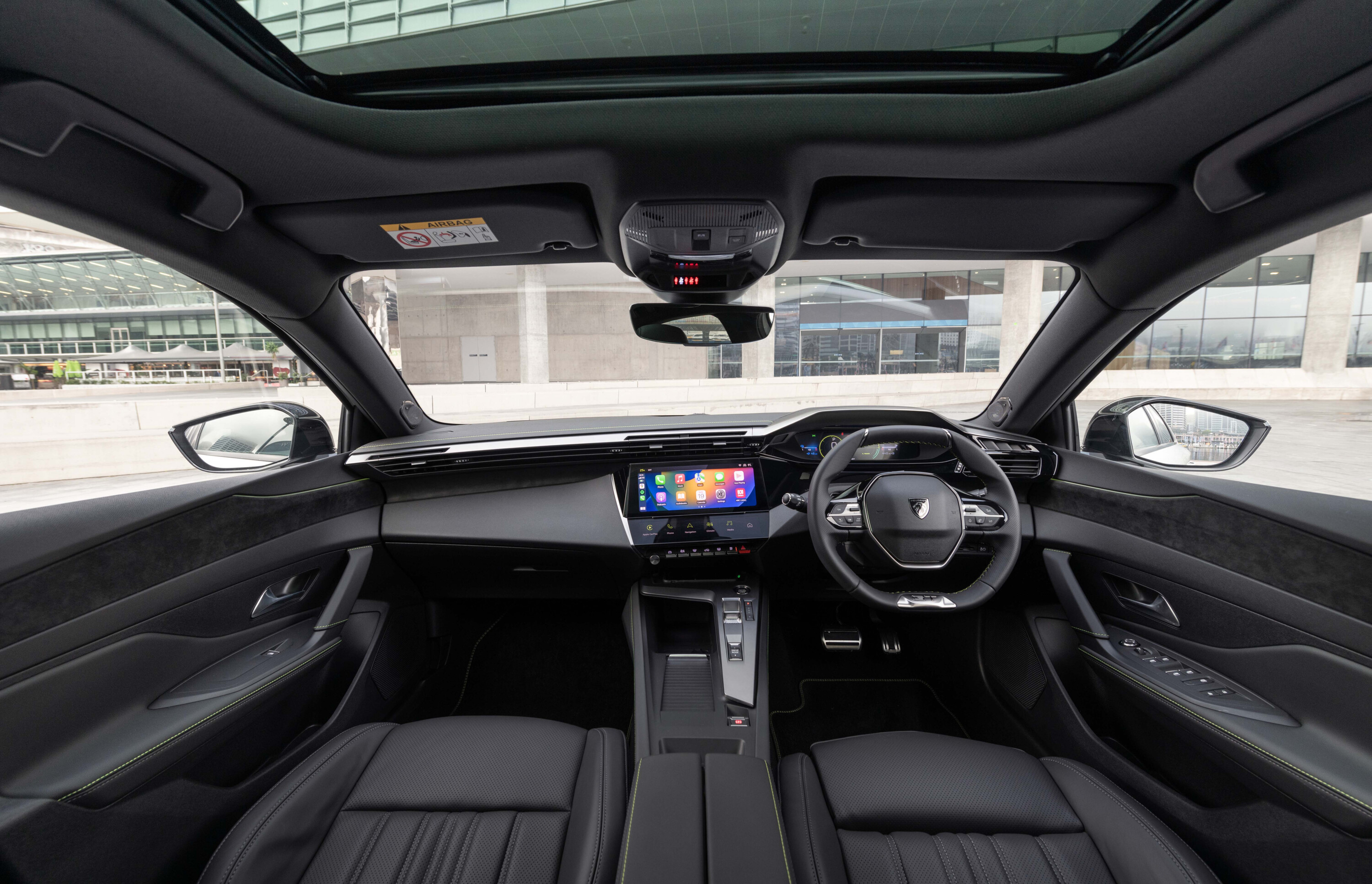
It is worth considering that the value proposition of this car is vastly better if you’re buying it on a lease. Until 2025, the federal government is rather generously – and unexpectedly – handing the same FBT tax concessions to plug-in hybrids as battery electric vehicles.
While you’re not paying less on the sticker price, the advantages of financing and running this car essentially tax-free are undeniable and render it – in a practical sense – cheaper than some petrol cars costing thousands less.
I’d be interested to see the lease numbers on a 308 GT petrol against the PHEV … plus you get to run the thing on electrons if you’ve got handy access to a plug at home or work.

Few buttons feature in the new 308 interior, where the excellent ‘i-Toggles’ provide a configurable strip of soft switches laid out underneath the screen to act as shortcuts. Beneath those is a row of switches that are also shortcuts to avoid menu diving.
The Focal-branded 10-speaker stereo is a belter, too. Its maker went to a lot of trouble to model the way sound bounces around the car’s interior to make it sound good and it’s a huge step up on the base model’s six-speaker arrangement.
On the poor side of the ledger is a manually adjusted front passenger seat, which smacks of corner-cutting that shouldn’t happen on such a pricey car.
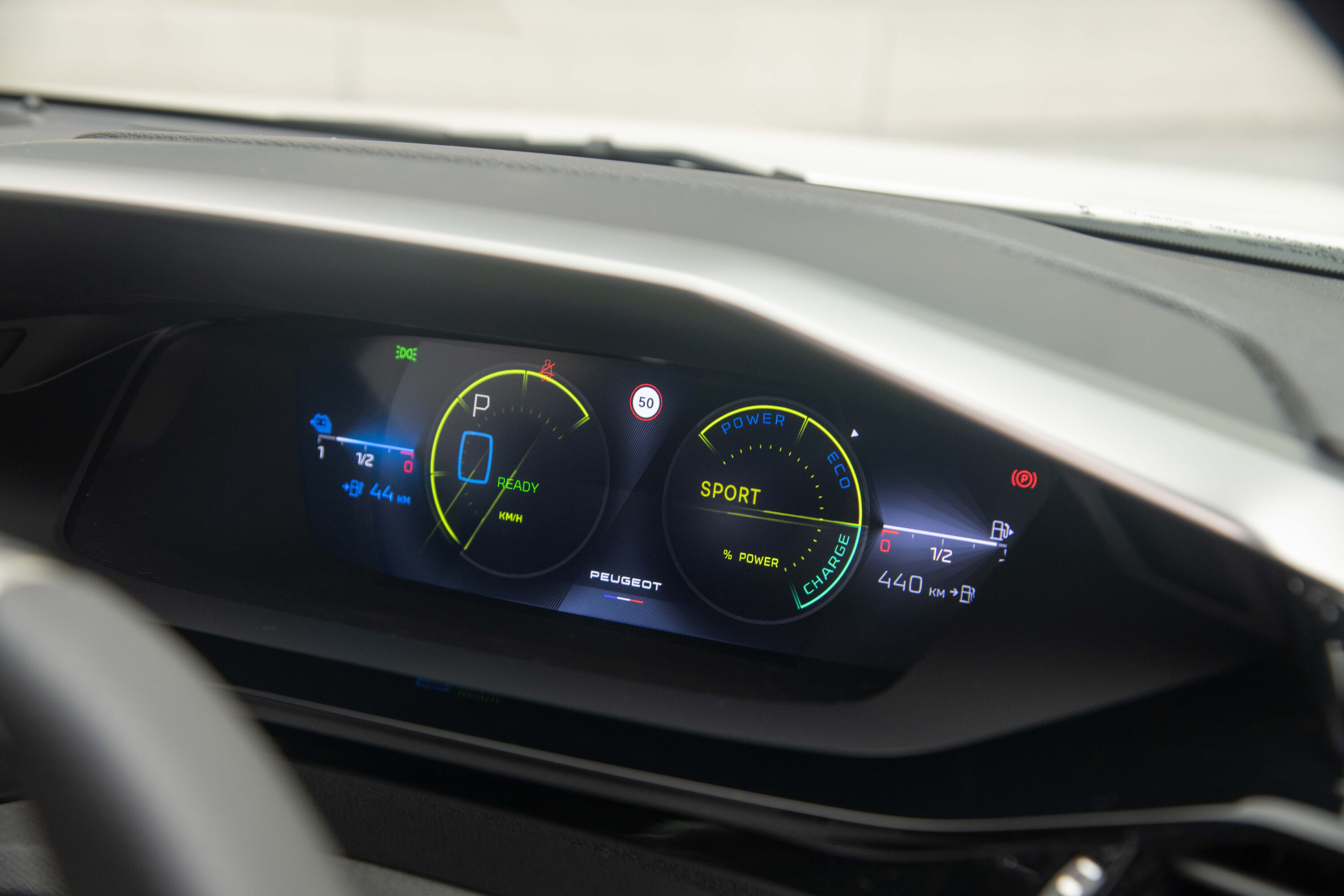
How do rivals compare on value?
Cupra’s recent arrivals include the Leon VZe, a Golf-related hatchback with a hybrid powertrain for $59,990 before on-road costs, which is stretching the friendship of this new-to-Australia nameplate before it even begins.
Looking elsewhere for cars with a plug, you can get a Polestar 2 for a couple of grand more than a 308 PHEV and it does without the engine and all the extra weight and carbon dioxide associated with it. Well, when I say “you can get” I mean “you can buy and wait a while”.
Sticking with electric-only options, both the Tesla Model 3 and Model Y share a price ballpark with this Peugeot. Neither has anything like the style or interior of the 308, but they both have better rear space and big boots.
For a lot less coin – as in around $17K less – you could also roll the dice on a similarly-sized BYD Atto 3 with its clever Blade battery tech, roomy-if-weird interior and slightly chaotic corporate presence in Australia.

Interior comfort, space and storage
Peugeots have long had excellent front seats and these are no different. Comfortable and with plenty of adjustment, they also have a massage function for both driver and passenger.
That said, the passenger seat is otherwise unpowered, one of a few mystifying specification choices. You might also find the seats automatically start using the air pockets of the massage feature to stretch your back when you’ve been on the road for over two hours.
Seat heating is also thrown into the bargain, which is useful for saving battery while running in electric-only mode. As with all other Peugeots, you are presented with the polarising i-Cockpit setup which features a high-set dashboard and a low-set – and very small – squared-off steering wheel.
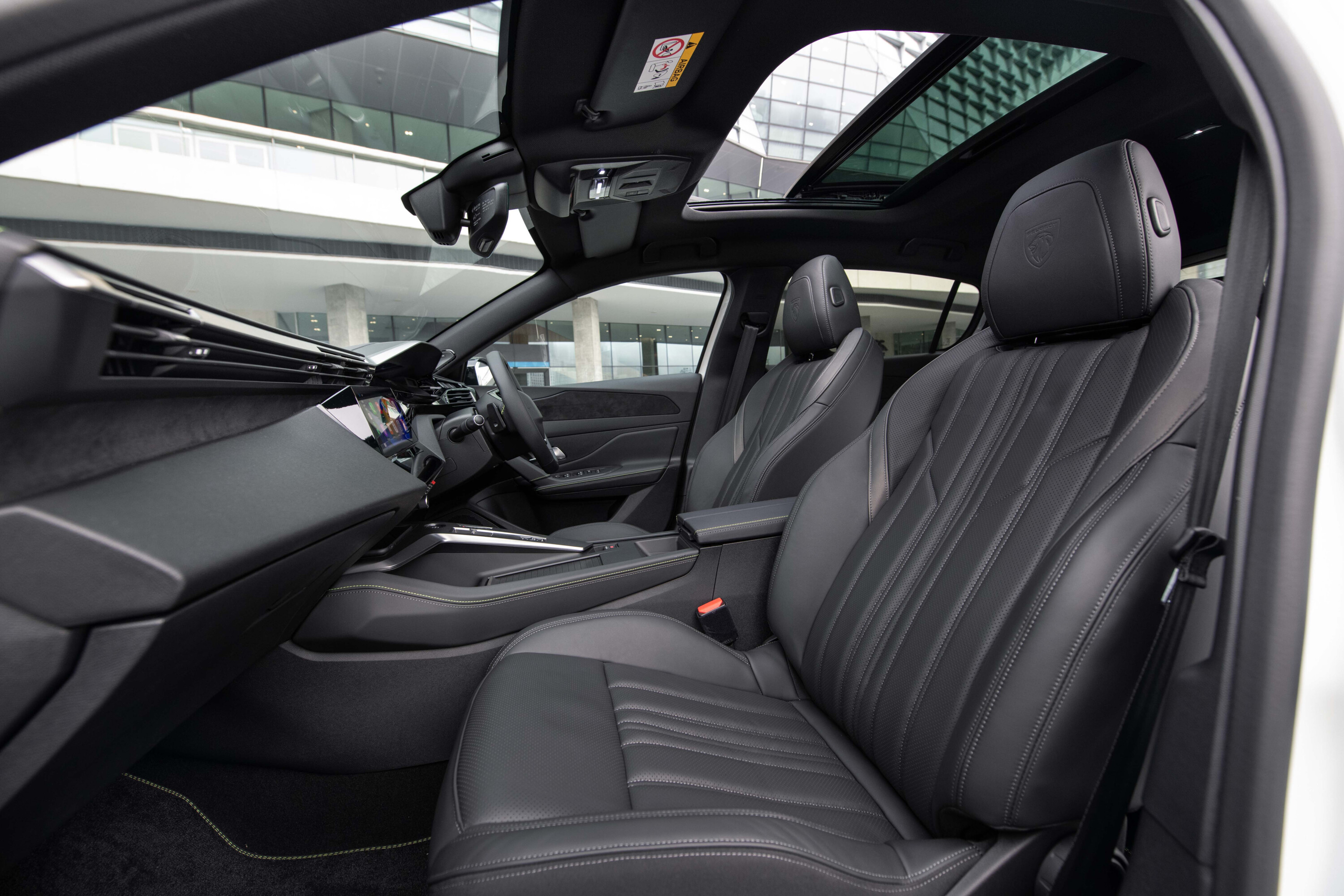
I personally think it doesn’t work as well in hatchbacks as it does in taller Peugeots, like the SUVs and commercial vans, but I don’t mind it in the 308.
You get a wireless charging pad for your phone, two USB-C ports, a pair of cup holders that live up to the name (not always a guarantee in French cars, looking at you, Renault) and door pockets that took our absurdly large water bottles on our regular trip up to Katoomba for lunch.
The rear seat is sadly not a super comfortable place to be for an adult. I just fit in behind my driving position which is not uncommon in the segment (yes that’s you, Mazda 3 and Toyota Corolla) but the thick C-pillar and shallow-ish glass make it a bit claustrophobic. Kids will be fine and the middle seat is a real last-resort proposition.

You do get rear air vents (big tick) and two USB-C ports plus a little storage slot for which I couldn’t quite determine the intended purpose. There are no cup holders and, scandalously, no rear armrest. At least the door pockets will take cans or small bottles.
In the boot – where you’ll find the charging cable bag – is 361 litres of space, which is not bad going and comfortably beats the Corolla and Mazda 3 hatchbacks while not being far off the VW Golf’s 374L seats-up capacity.
You will have to lift things over the load lip and there is a small meshed storage section for loose items on the left-hand side. Seats down, Peugeot says you’ll get a whopping 1271 litres. Both figures are down on the petrol-only car’s 412L/1323L.
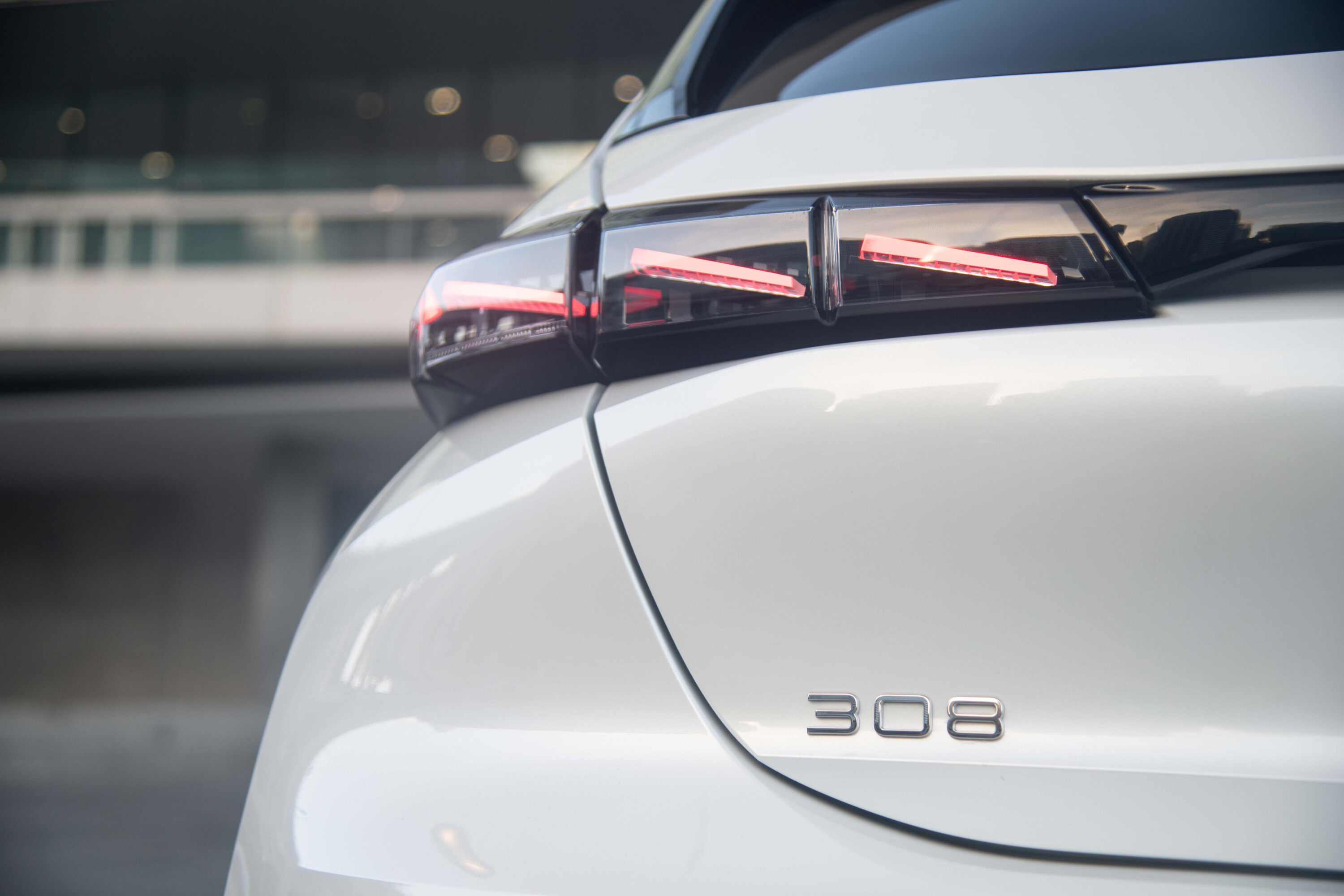
Battery and charging
Charge overnight on a time-of-use plan and you’re (theoretically) getting 60km for about $3 or about a third of what a petrol 308 would cost over the same distance burning 7.0L/100km.
Even if you only get the 44km I got for my $3, it’s still well under half the price of running it on petrol.
A Type 2 240-volt charger is supplied with the car and plugs into a domestic socket, which can take the battery from empty to full in five hours. It’s never completely dead, of course, as the car acts as a hybrid when the battery reaches a certain reserve point, which I’m guessing is around 10 per cent.
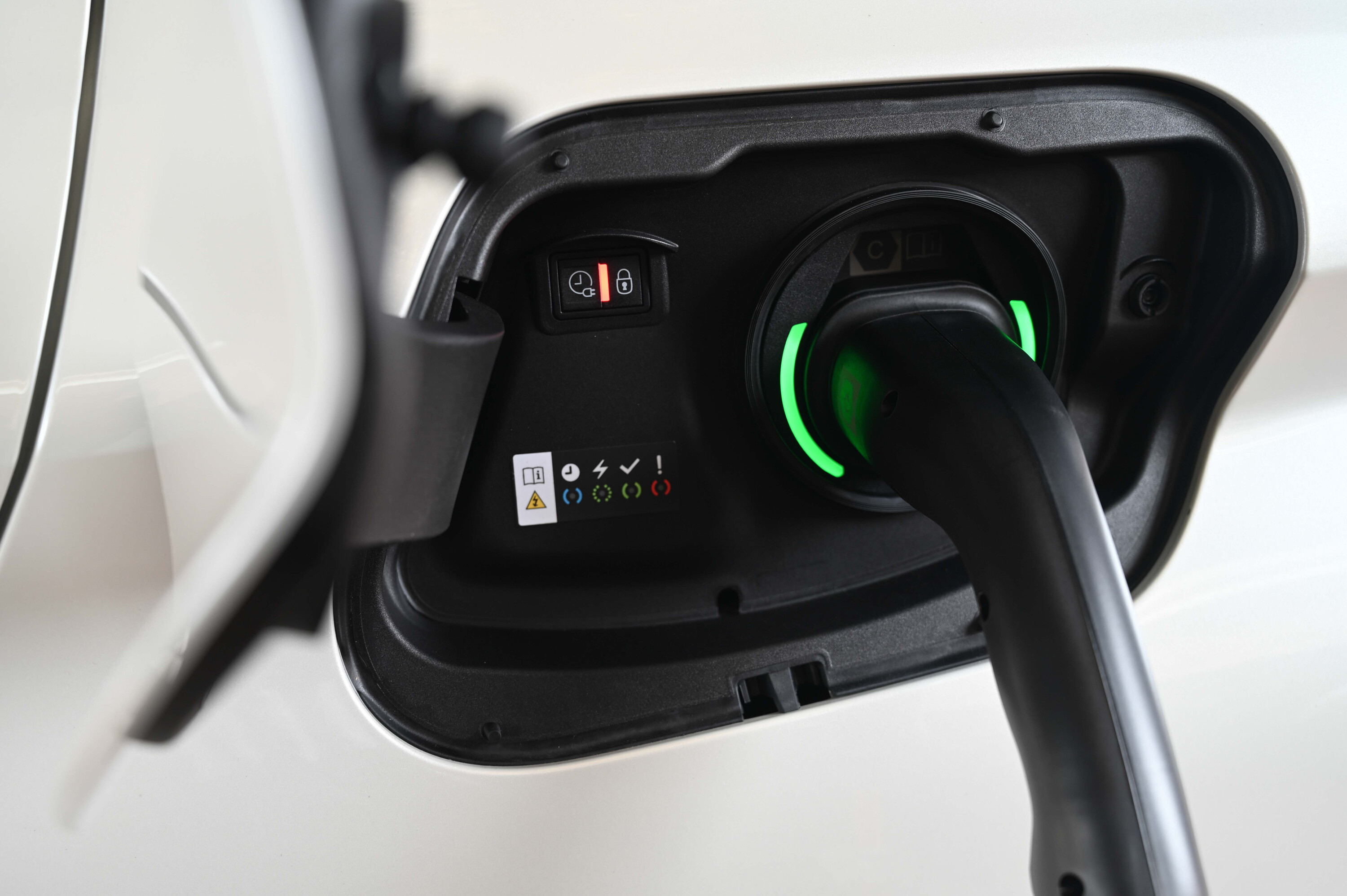
Getting a wall charger seems a waste of money with such a short charge time (assuming you get the promised 3.7kW, which you may not, depending on a variety of external factors) and the 40-60km range covers a whacking great proportion of daily urban and suburban driving.
Public charging will likely be quite frustrating as most chargers in Australia are CCS2 DC plugs, which won’t fit the Peugeot’s Mennekes-type connector. Many chargers are broken anyway or have CHAdeMo connectors that are increasingly rare on cars you can buy new.
The charge port is on the right-hand side of the car and mirrors the petrol cover on the other side.

What is it like to drive?
With few exceptions, Peugeot hatchbacks are good fun to drive and ride around in.
The new 308 is not one of the exceptions and even with just 93kW, the GT petrol is one of the nicest cars to drive in the segment. Probably the nicest.
| 2023 Peugeot 308 GT Sport PHEV drivetrain | |
|---|---|
| Engine | 1.6-litre four-cylinder petrol |
| ICE power | 132kW @ 6000rpm |
| ICE torque | 250Nm @ 1750rpm |
| Electric power | 81kW |
| Electric torque | 250Nm |
| Combined power | 165kW |
| Combined torque | 360Nm |
| Transmission | 8-speed automatic |
| 0-100km/h | 7.5 seconds (claimed) |
A lot more power and torque is on offer in the GT Sport PHEV, with a combined total of 165kW and 360Nm, significantly up on the 1.2-litre turbo-petrol of the standard cars. I guess that’s where a lot of your money goes, as well as on the battery and motor to deliver that kind of grunt.
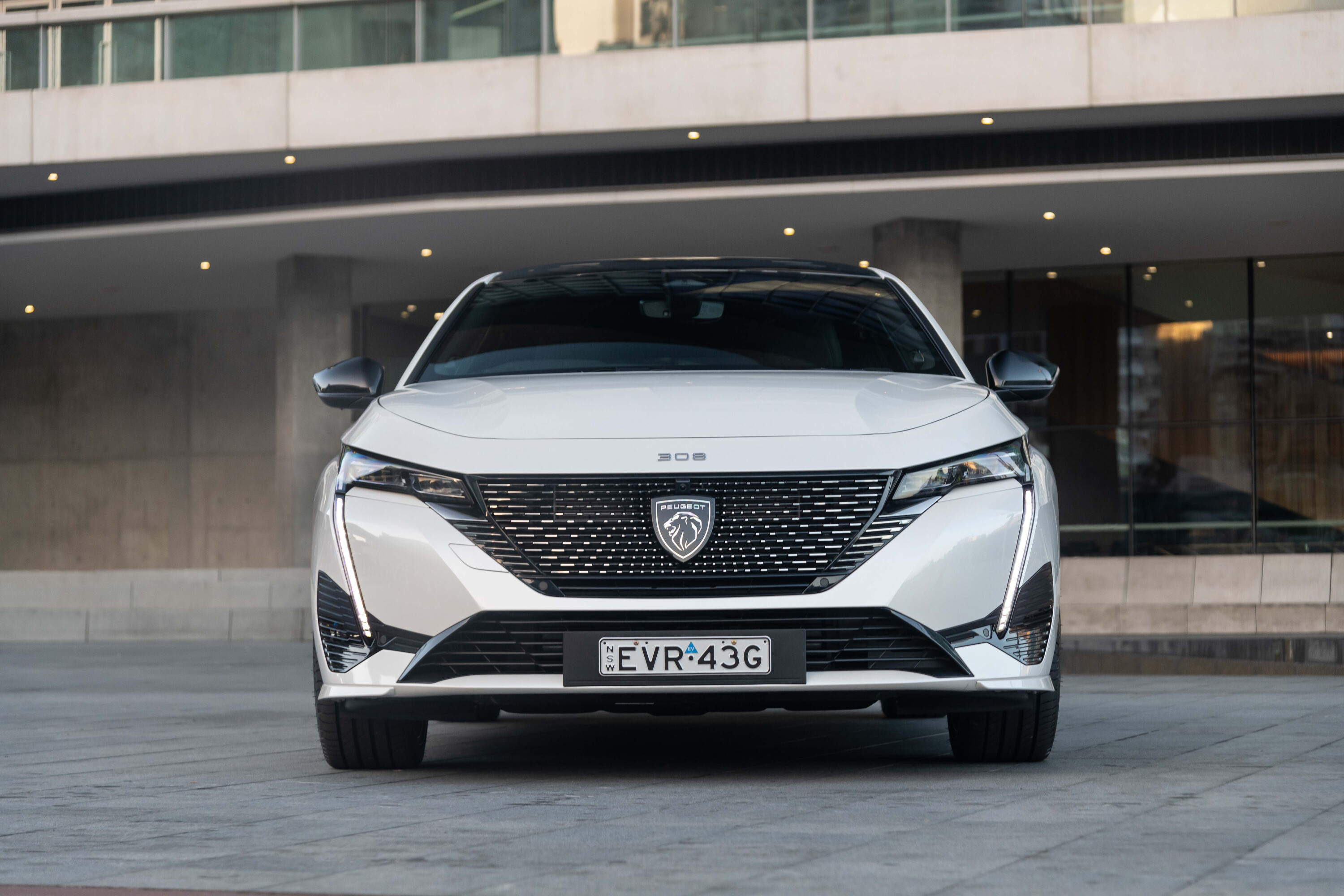
The old GTI was up around these figures and it went like a Star Wars fan who thinks Mark Hamill is having coffee around the corner from the office.
No such luck with the portlier PHEV, but it isn’t slow either. It’s far smoother than the similarly powerful GTI and very much built for comfort. It’s still terrific fun to thread through the corners or more mundane pleasures like launching out of a side street without having to worry about the truck coming your way. Or carving up a roundabout.
It allies a handy, fluid chassis with quick steering and plenty of torque from the combined efforts of the petrol and electric motors. It’s quite remarkable that the 308 handles as well as it does. Despite its price tag, it still carries the rather basic torsion beam rear suspension of lesser machines.

The French seem to be able to work some serious black magic with that type of suspension and it’s only when you hit a nasty rubber speed bump that you remember you’re not floating along on a well-sorted multi-link setup.
When run solely in EV mode, the 81kW and 260Nm are perfectly agreeable in traffic, with the engine cutting in when you put your foot too close to the firewall. There is a decent amount of shove off the line to keep up with traffic without fossil-fuelled intervention and is very quiet while it does so. I had no trouble running the battery dry in EV mode.
Once the battery hits its predetermined limit, it reverts to a hybrid mode, which is also perfectly agreeable.
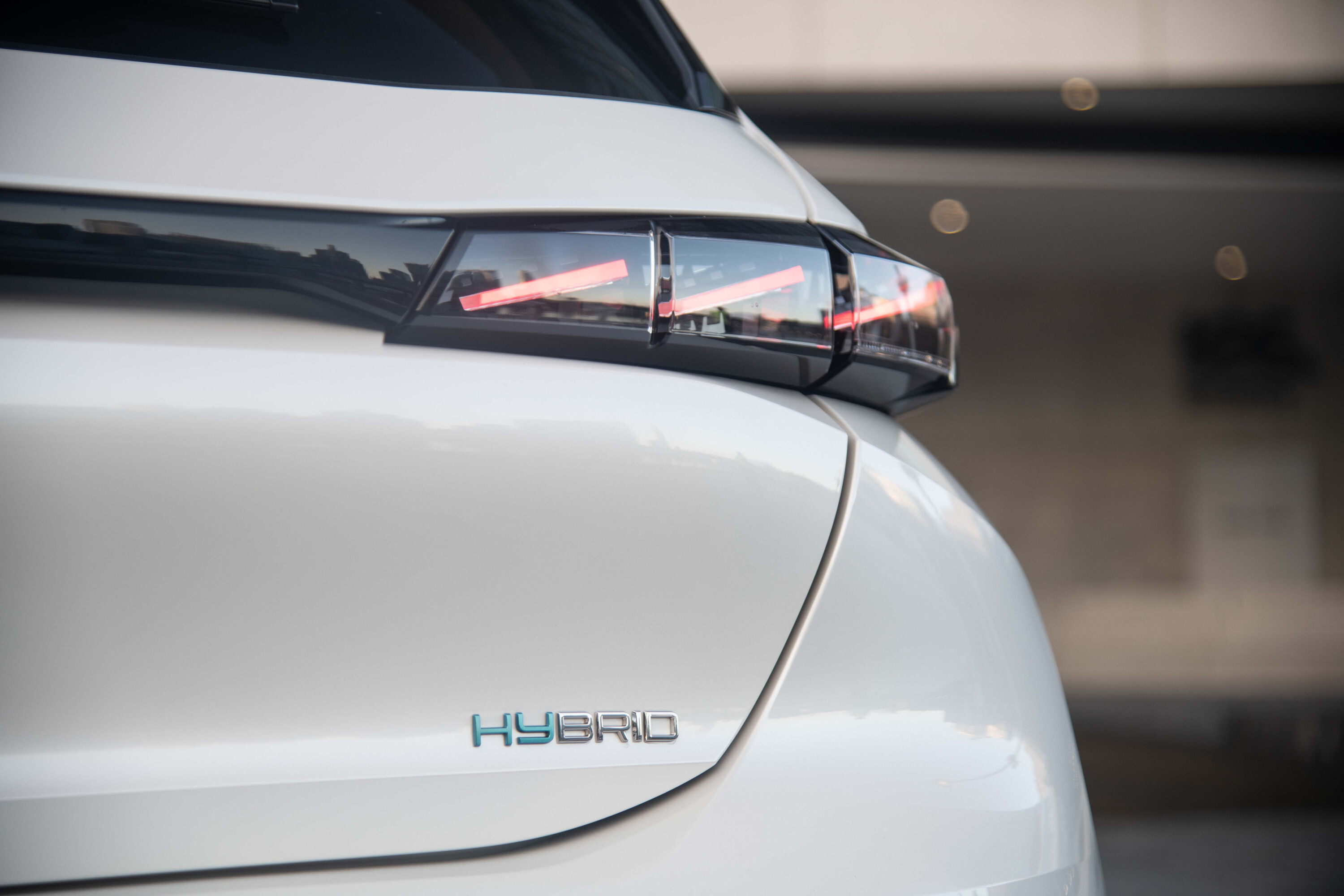
One thing I found puzzling was the lack of regenerative effect in any drive mode. Irritatingly, to activate something approaching strong regen, you have to press the B button on the console next to the toddler-tongue gear selector (very Golf, but better executed).
Having hit that, you find yourself in much better shape; getting more charge on lift-off, under braking and coasting downhill. That will explain the 44km I got from the battery, too, as I wasn’t always driving and forgot to inform my wife of the B button’s existence. Just don’t press the nearby P button.
I would have liked this chassis to be a bit sharper and live up to the GT Sport name and corresponding power output but given the old 308 GTI hardly flew out the door (a second-hand bargain if ever there was one; get on it if you’re keen), that’s probably for the best.
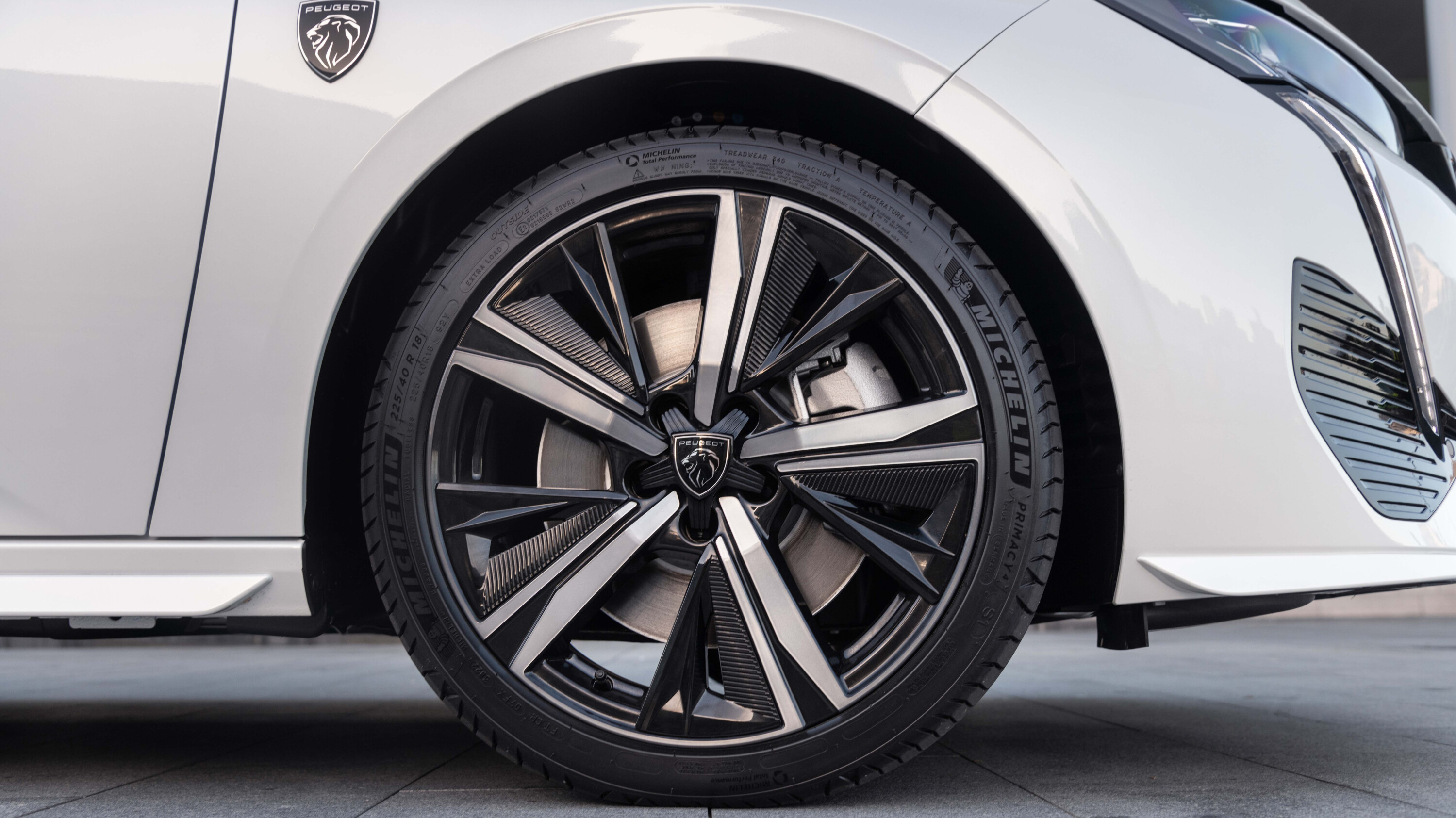
How is it on fuel?
I keep finding myself asking two questions about PHEVs.
Are people that invested in the idea that they’ll keep their battery topped up? According to Mitsubishi, 90 per cent of Outlander PHEV owners do. So maybe, I guess?
You can dismiss the 1.4L/100km claimed economy figure because official testing just isn’t equipped to get an accurate figure from plug-in hybrids.
| 2023 Peugeot 308 GT Sport PHEV fuel economy | |
|---|---|
| Combined fuel economy (claimed) | 1.4L/100km |
| Indicated fuel economy | 4.5L/100km |
| Claimed EV range | 60km |
| EV range on test | 44km |
My time with the car was an even split of highway running as well as suburban stuff over about 540km. The trip computer result of 4.5L/100km lines up with a hybrid Corolla but that was without regular recharging of the battery, which would have seen a considerable drop in the consumption figure.
However, I don’t think this is terrible going at all given I was rather enjoying myself while driving the 308. As good as the Corolla is, the Peugeot is way more fun.
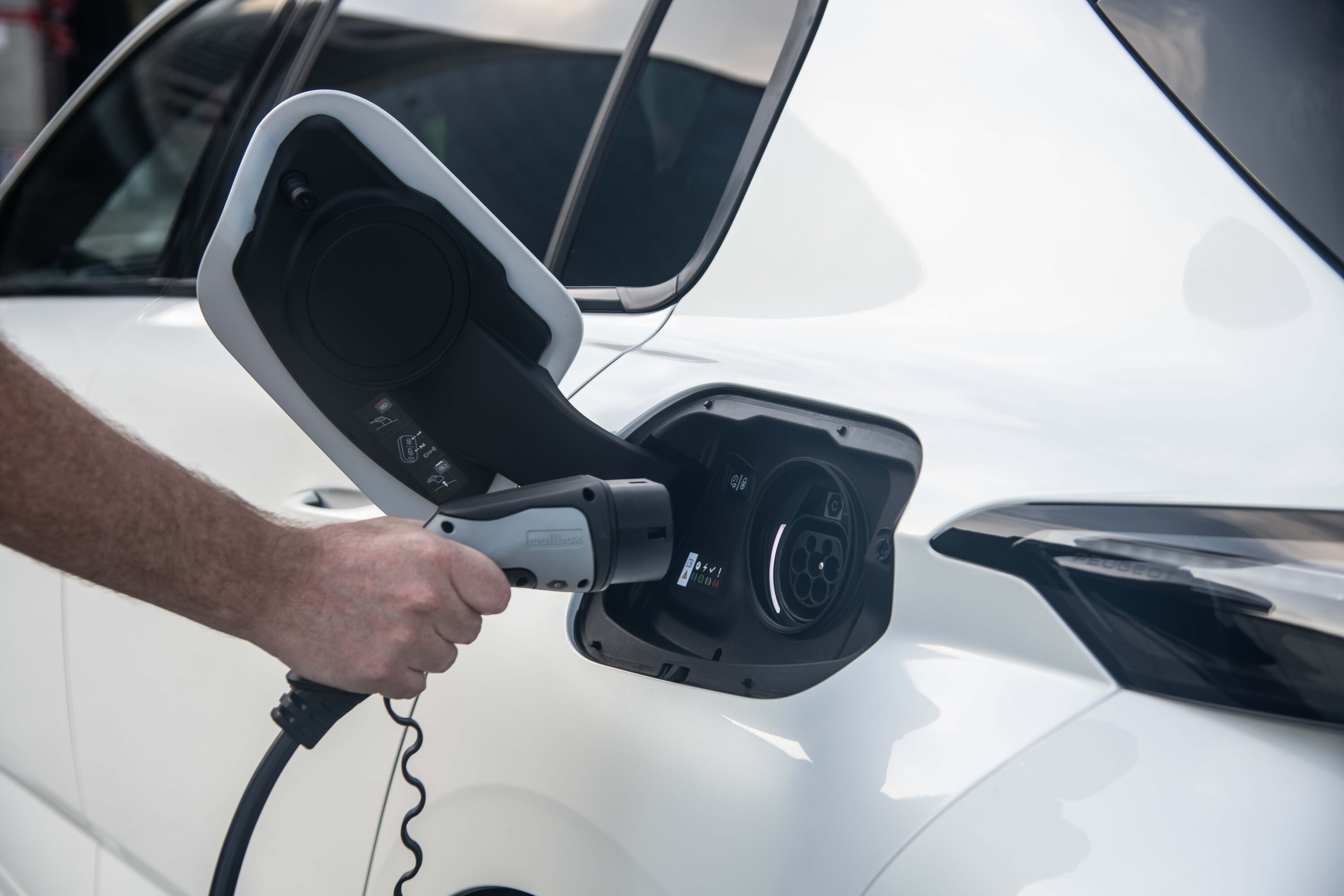
How safe is it?
The 308 scored four ANCAP stars.
In itself that is not a terrible thing – some far more expensive cars are (or would be) the same. It has a lot to do with a missing centre-front airbag that is all but mandatory to score the top number.
| 2023 Peugeot 308 GT Sport PHEV safety features | |
|---|---|
| 6 airbags | Lane-keep assist |
| ABS | Post-collision braking |
| Active lane positioning | Reverse cross-traffic alert |
| Blind-spot monitoring | Reversing camera |
| Driver attention warning | Speed sign recognition |
| Forward auto emerency braking | Stability and traction controls |
What is annoying is the lack of reverse auto emergency braking. That should be present and correct on a car of this cost and positioning.
Kids and baby seats are held in place with two lots of ISOFIX points plus three top tether anchors.
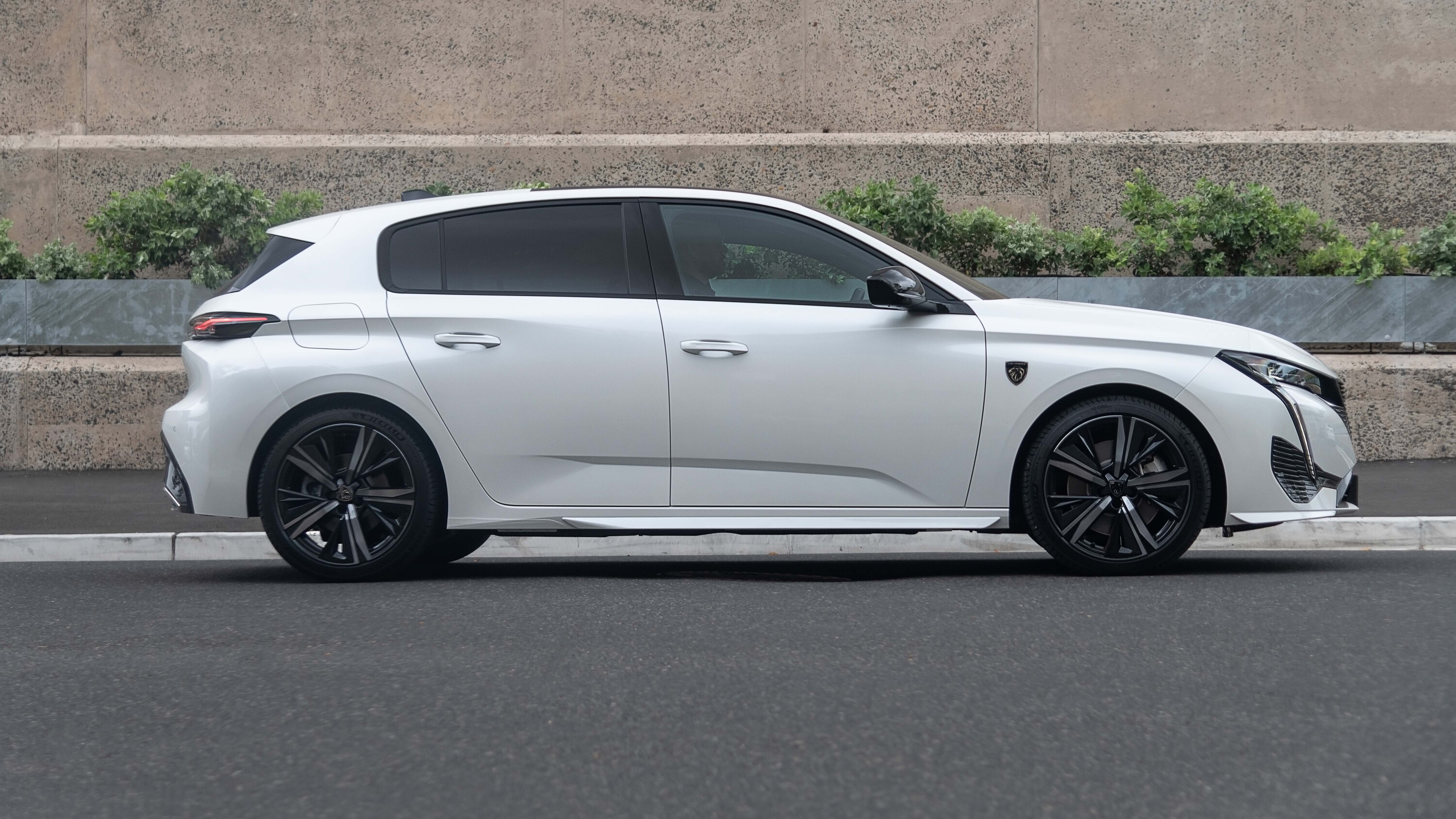
Warranty and running costs
Peugeot offers a five-year, unlimited-kilometre warranty, now de rigeur in our market. And that’s a good thing.
The battery warranty runs for eight years or 160,000km, guaranteeing a degradation level of no more than 30 per cent.
Servicing comes around every 12 months or 15,000km. You can pre-purchase a three-service pack for $1200 or a five-service pack for $2000. That’s not bad going for a Euro hatchback and is even comparable to some Korean competition. The five-year plan saves $690 over pay-as-you pricing.
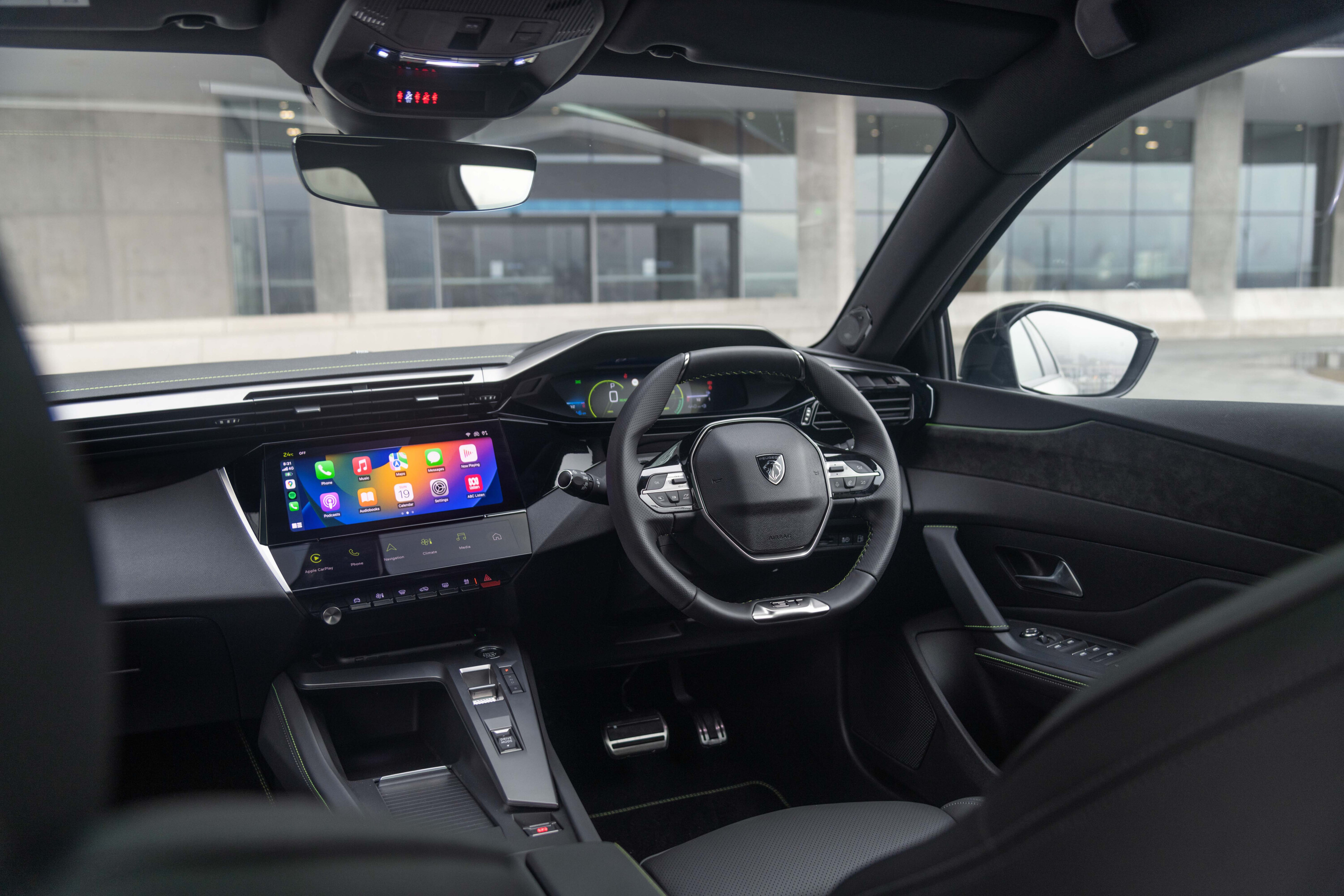
VERDICT
The car itself is a ripper. The 308 GT Sport PHEV should be on every pricier-end-of-the-market hatchback buyer’s list.
But at $64,990 before on-road costs, it’s not justifiable for a private buyer although may be bearable as a salary sacrifice lease deal for someone who can’t go fully electric.
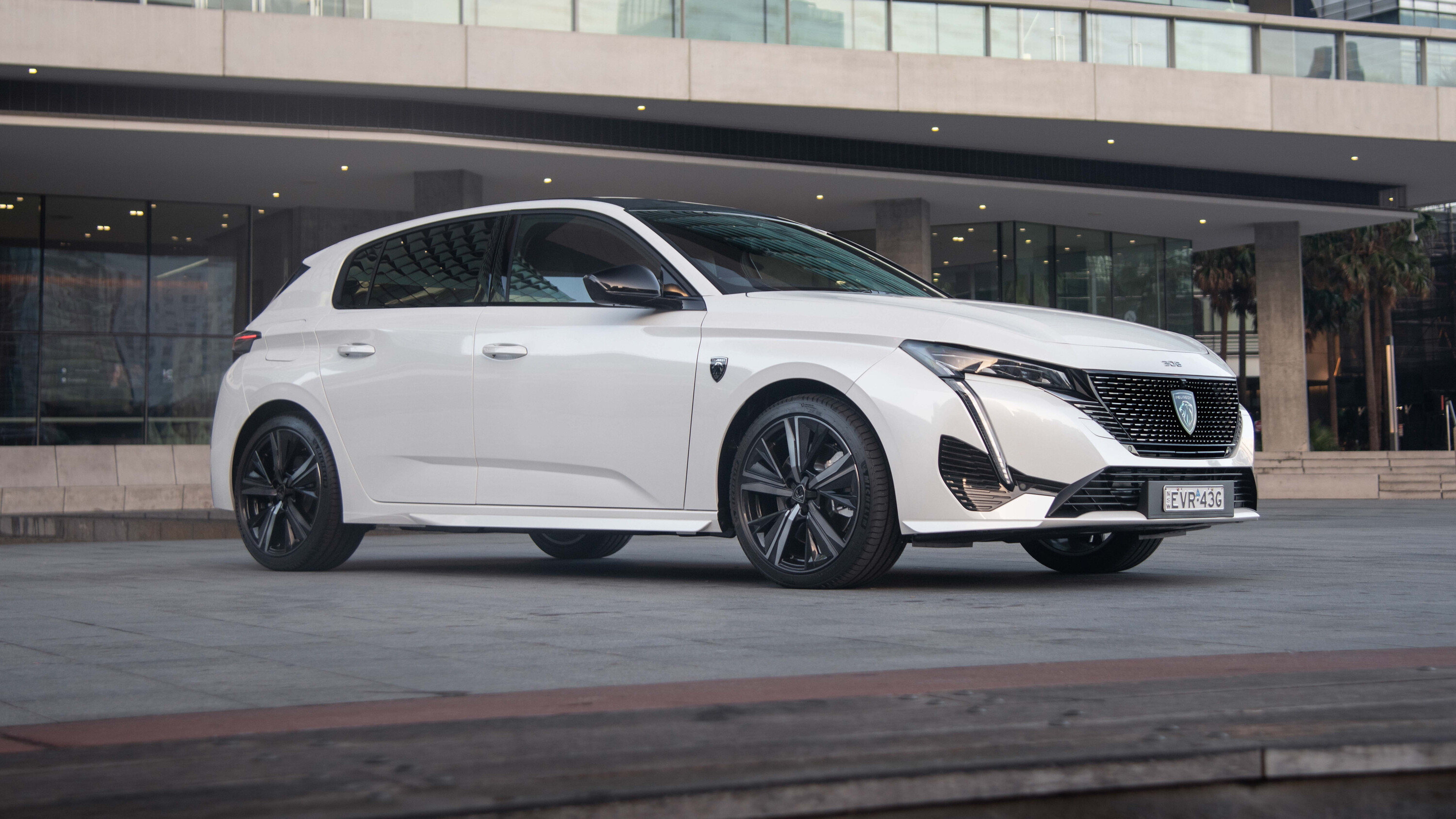
It’s just too expensive for a five-door hatchback. Yes, it has some great standard features, drives beautifully and smoothly, looks the business… I could go on and on. But dropping $70K to get a hatchback on the road that isn’t that much better than its excellent 1.2-litre brethren – which are already on the pricey side – well, it’s a bridge too far for me.
And it hurts to say that because this truly is a good car.
| 2023 Peugeot 308 GT Sport PHEV specifications | |
|---|---|
| Body | 5-door, 5-seat small hatchback |
| Drive | front-wheel |
| Engine | 1.6-litre four-cylinder petrol |
| ICE power | 132kW @ 6000rpm |
| ICE torque | 250Nm @ 1750rpm |
| Electric power | 81kW |
| Electric torque | 250Nm |
| Combined power | 165kW |
| Combined torque | 360Nm |
| Transmission | 8-speed automatic |
| 0-100km/h | 7.5 seconds (claimed) |
| Bore stroke (mm) | 77 x 85.8 |
| Fuel consumption | 1.4L/100km (combined) |
| Weight | 1665kg |
| Suspension | MacPherson struts front/torsion beams rear |
| L/W/H | 4365mm/1859mm/1465mm |
| Wheelbase | 2675mmmm |
| Tyres | 225/40 R18 |
| Wheels | 18-inch alloy (no spare) |
| Price | $64,990 + on-road costs |
Score breakdown
Things we like
- Powerful hybrid drivetrain
- Great fun to drive
- Brilliant interior design
- Useful electric range
Not so much
- The price. My goodness the price.
- Tight rear seat
- Occasionally puzzling ergonomics
- No rear AEB
We recommend
-
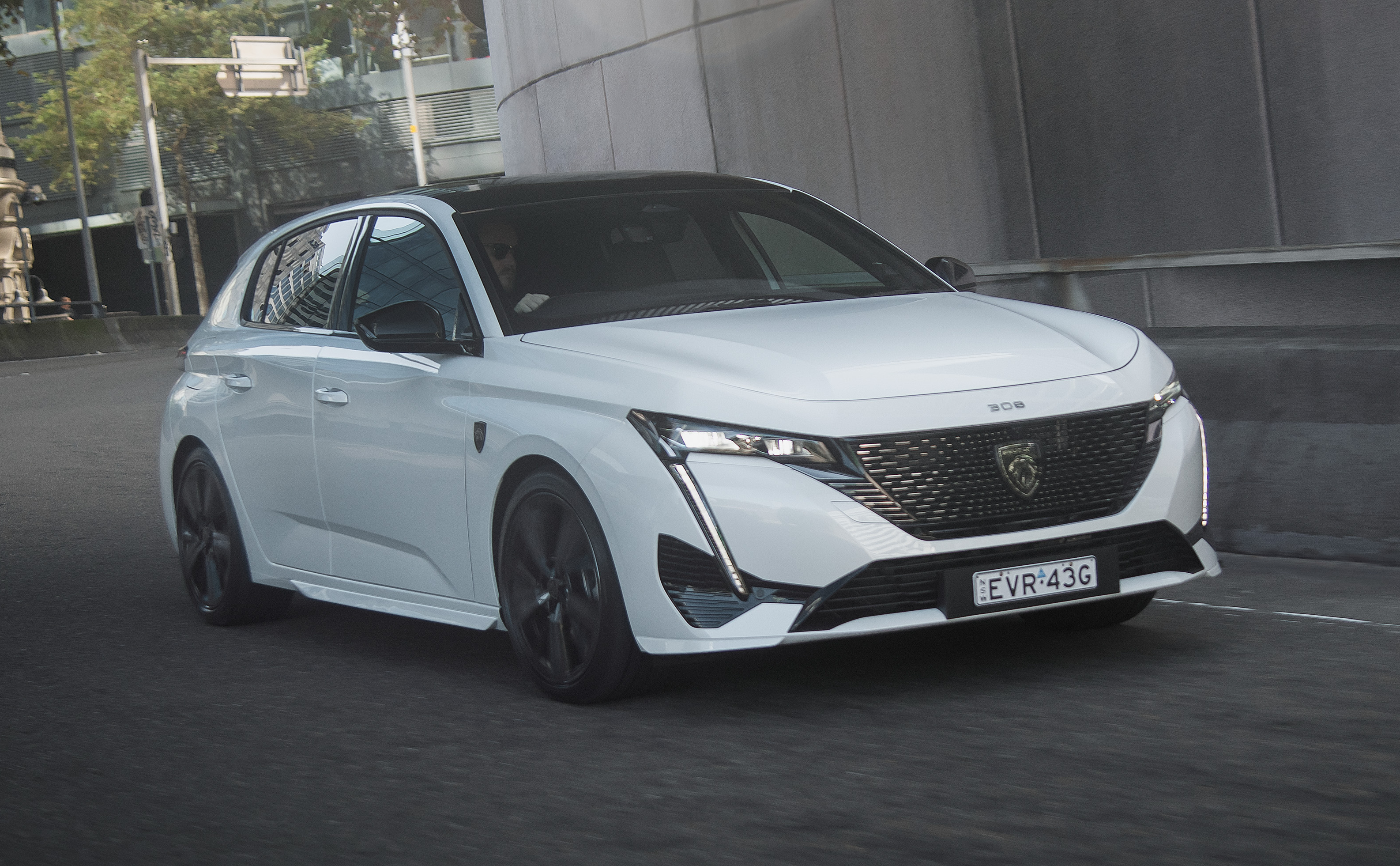 News
News2023 Peugeot 308 pricing and features: GT Sport PHEV arrives
Pricing for Peugeot’s new four-strong small car range has been revealed
-
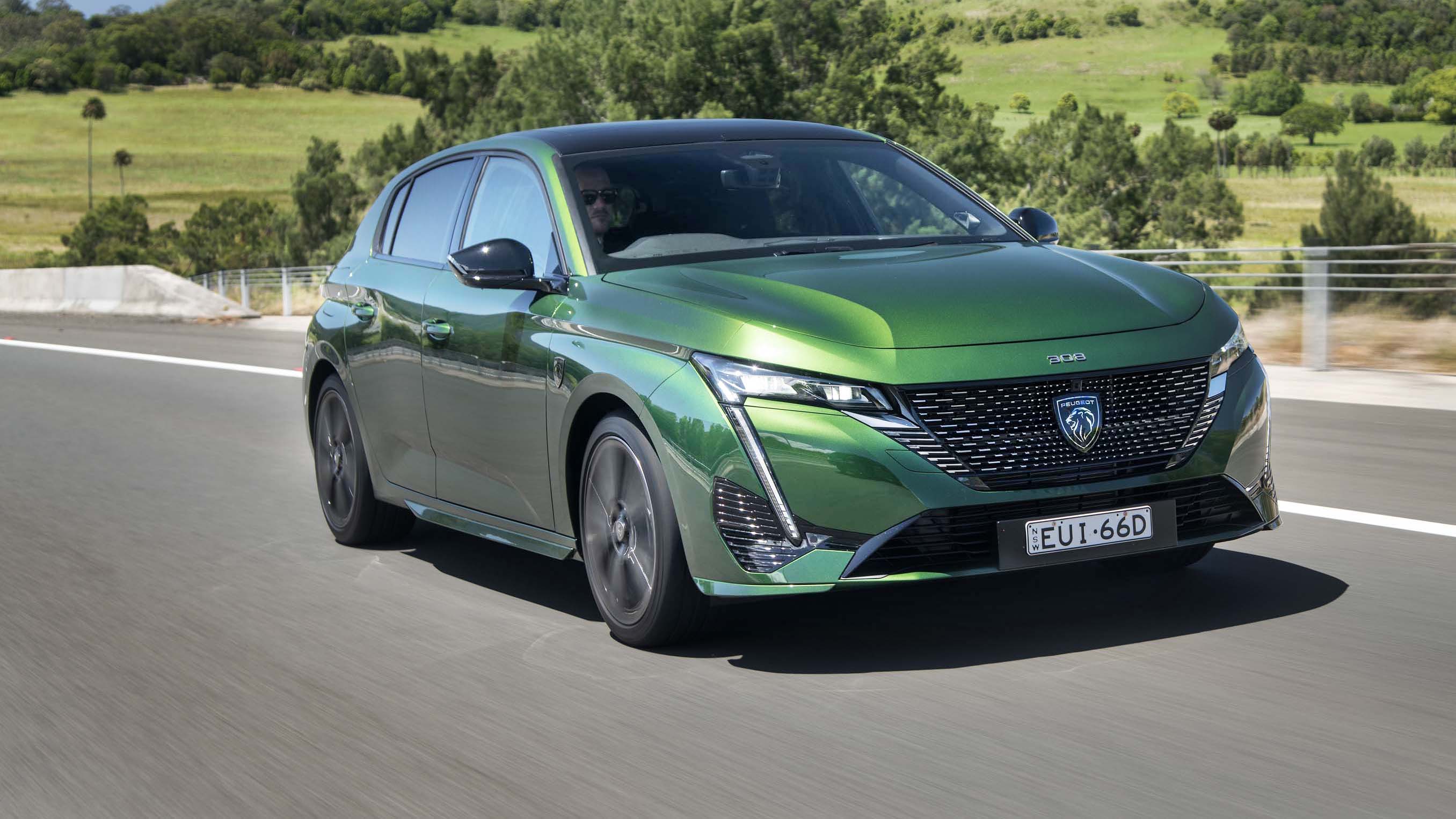 Reviews
Reviews2023 Peugeot 308 review: Hatch and wagon, first Australian drive
Peugeot’s small car makes its long-awaited comeback in three-cylinder petrol hatchback and wagon. It’s new and fresh inside and out, including the badge.
-
 News
News2025 New Car Calendar: All the new cars coming to Australia
Take a look at our list of what is expected to launch in Australia in 2025 – plus those we might not see locally just yet






